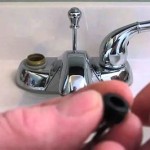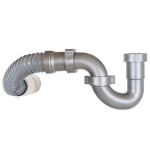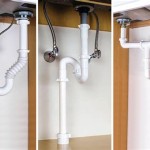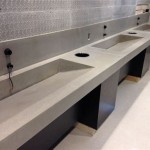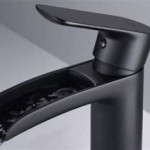How to Clear Slow Bathroom Sink Drains Faster
A slow-draining bathroom sink can be a frustrating inconvenience. It can lead to water pooling in the basin, making it difficult to wash your hands or face. Additionally, a sluggish drain can indicate a more serious plumbing problem that needs attention. The good news is that clearing a slow bathroom sink drain is often a simple task that can be tackled with readily available tools and a bit of know-how. Here are some techniques to speed up the drainage process and prevent future clogs.
1. Try a Plunger
A plunger is a simple yet effective tool for clearing minor clogs in bathroom sink drains. The suction created by the plunger helps dislodge hair, soap scum, and other debris that may be obstructing the drainpipe. To use a plunger effectively, follow these steps:
- Ensure the sink basin is partially filled with water. This creates a seal for the plunger to work against.
- Place the plunger over the drain opening, ensuring a tight seal.
- Press down firmly and rapidly, creating a strong suction.
- Continue plunging for several minutes, periodically lifting the plunger to release the suction and check for progress.
- If the drain still seems clogged, repeat the process, using more vigorous plunges.
Note that using a plunger may not be effective for all clogs, particularly those caused by objects trapped deeper within the drainpipe.
2. Remove Hair and Debris from the Drain
Hair and other debris can easily accumulate in bathroom sink drains, creating a blockage. The buildup can be easily removed with a few simple tools.
- Use a drain snake or wire coat hanger: Both tools are effective for retrieving hair and debris from sink drains. Bend the hook at the end of the wire coat hanger to form a small hook, or use a drain snake designed specifically for this purpose.
- Use a pair of pliers: For larger objects, use pliers to grasp and remove them from the drain.
Cleaning the drain regularly can help prevent future clogs. After removing visible debris, it's a good idea to flush the drain with hot water to ensure all remaining particles are removed.
3. Use a Drain Cleaner
If plunging and cleaning the drain fail to clear the clog, drain cleaner may be the next option. Drain cleaners contain chemicals that break down grease, hair, and other organic materials that cause clogs. However, it's important to use drain cleaners with caution, as they can be corrosive and harmful to plumbing fixtures.
- Always read and follow the product's instructions carefully.
- Avoid using drain cleaner on older pipes, as it may damage them.
- Never mix drain cleaners with other chemicals, as it can create toxic fumes.
- Wear protective gear, such as gloves and eye protection, when using drain cleaner.
- Ensure good ventilation when using drain cleaner, as the fumes can be harmful.
- After using drain cleaner, flush the drain with hot water.
If the drain is still clogged after using a drain cleaner, it’s best to call a professional plumber for assistance.
4. Baking Soda and Vinegar Solution
A natural and less harsh alternative to commercial drain cleaners is a mixture of baking soda and vinegar. These two household ingredients can dissolve grease and break down organic matter, helping to clear clogs.
- Pour one cup of baking soda down the drain.
- Pour one cup of white vinegar down the drain.
- Cover the drain with a stopper or cloth.
- Let the mixture sit for 30 minutes.
- Flush the drain with hot water.
Repeat the process if the clog is still present. While baking soda and vinegar are safer alternatives to commercial drain cleaners, it's important to note that they may not be as effective for stubborn clogs.
In addition to the above techniques, regular drain maintenance can help prevent future clogs. Here are some helpful tips:
- Avoid pouring grease or cooking oil down the sink drain.
- Use a strainer to catch hair and debris before they enter the drain.
- Flush the drain with hot water after each use to prevent buildup.
- Consider using a drain protector to prevent clogs from forming.
By following these tips and methods, you can keep your bathroom sink drains flowing freely and prevent frustrating clogs.

How To Unclog A Slow Running Bathroom Sink Drain 10 Options

How Can I Clear A Slow Drain Faq Plumbing By Jake

How To Unclog A Drain Without Calling Plumber

How To Unclog A Slow Running Bathroom Sink Drain 10 Options

Slow Sink Drain 6 Diy Fixes For Before You Call A Plumber Bob Vila

How To Clear A Clogged Drain Reviews By Wirecutter

How To Unclog A Slow Running Bathroom Sink Drain 10 Options

How To Fix A Slow Draining Or Clogged Bathroom Sink

How To Unclog A Slow Draining Bathroom Or Kitchen Sink Fast Baking Soda Vinegar Cleaning

5 Natural Ways To Unclog A Bathroom Sink Hiller How
Related Posts

